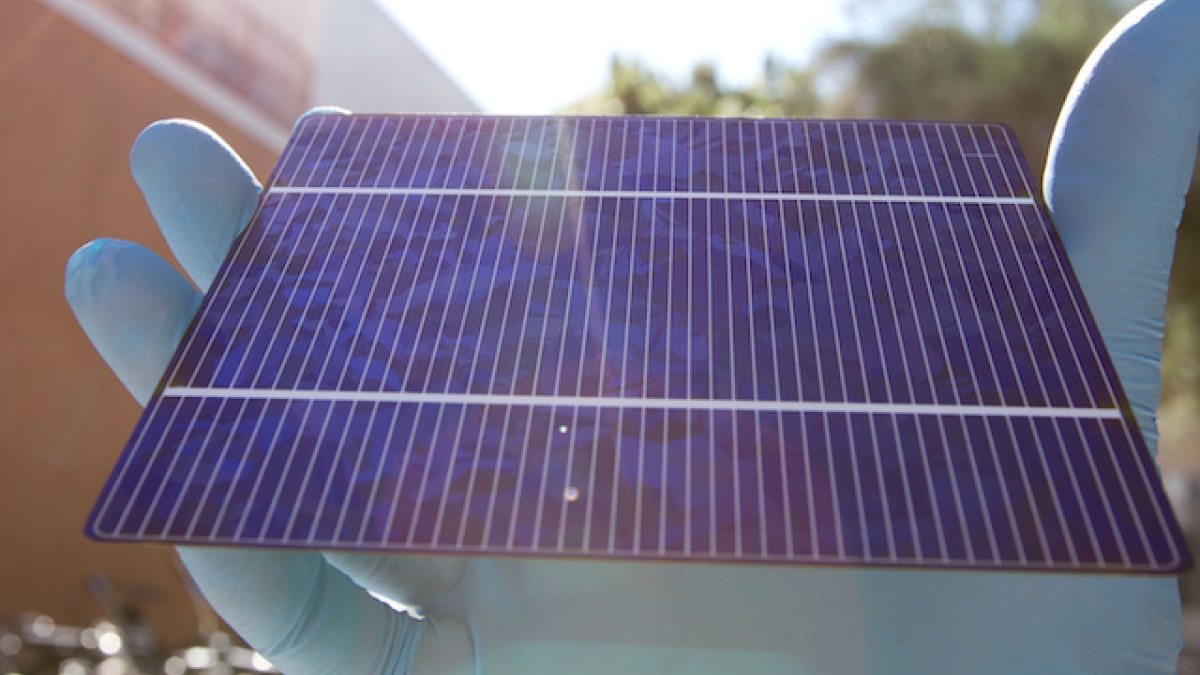Collaborations with industry aim to boost solar energy technology

Two Arizona State University engineers – Mariana Bertoni and Stuart Bowden – will have roles partnering with industry as part of an effort by the U.S. Department of Energy to aid photovoltaic manufacturing and supply-chain companies in advancing their technologies.
Their projects are among research and development endeavors the Department of Energy is supporting through its SunShot Solar Manufacturing 2 program, which is providing more than $24 million to 10 solar energy technology manufacturers based in the United States.
The program supports development of innovative technology for novel manufacturing equipment and processes that will reduce costs and increase efficiency.
Bertoni, an assistant professor, and Bowden, an associate research professor, are faculty members in the School of Electrical, Computer and Energy Engineering, one of ASU’s Ira A. Fulton Schools of Engineering. They both also are Senior Sustainability Scientists in the Global Institute of Sustainability.
Bertoni will work with SolarWorld Industries America Inc. to develop technology for a novel silicon ingot growth, the process by which the material for solar cells is manufactured. Funding from the Department of Energy will help transition SolarWorld’s proprietary NeoGrowth manufacturing process from pilot stage into early-stage production.
SolarWorld is the largest U.S. solar panel manufacturer and one of the world's largest solar-technology producers, headquartered in Hillsboro, Oregon.
The project will upscale the NeoGrowth production capacity to 300 megawatts of high-quality silicon wafers at a cost that is competitive with wafers on the open market.
Bertoni will identify the most detrimental defects present in the new crystals grown by SolarWorld and analyze the impact of the crystals on the performance of solar cells. The results will help SolarWorld optimize growth conditions to minimize as-grown defects and maximize the power-conversion efficiency of the final solar cells.
“This technology has the potential to revolutionize the wafer manufacturing industry by increasing throughput and quality when compared to current market technologies,” she said.
Bowden will work with Technic Inc. to eliminate the use of silver in the manufacturing of solar energy cells, and replace it with copper, a more abundant and less costly material. The goal is to develop a copper-plating technique that will reduce the cost of making solar cells without a decrease in performance quality.
Technic Inc. has established a global reputation for technical excellence in the electro-deposition of precious metals. It has more than 20 global facilities in 14 countries and is headquartered in Cranston, Rhode Island.
The solar photovoltaic industry presently uses 15 percent of the world’s silver supply. Replacing it with copper will allow the industry to grow by a huge magnitude and work at terawatt levels, Bowden said.
For his project, an ASU research facility will house the first installation of machinery for the new copper-plating process that will enable production of industrial-scale solar cells that do not require silver.
The two projects “demonstrate ASU’s leadership in collaborating with industry partners to bring new technologies out of the lab and into the market,” Bowden said.
A grant of $4 million to SolarWorld Industries America includes $400,000 for Bertoni’s research.
A $900,000 grant to Technic Inc. allocates $400,000 for Bowden’s research.
The projects boost ASU’s growing research activity in photovoltaic technologies for solar energy generation.
The largest part of that research portfolio is the Engineering Research Center for Quantum Energy and Sustainable Solar Technologies – or QESST – supported by the National Science Foundation and the Department of Energy to solve technological and economic challenges to harnessing solar power on larger scales. Read more.
Bertoni and Bowden are part of the QESST research team.